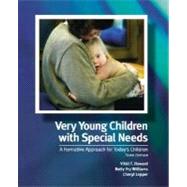



|
1 | (50) | |||
|
3 | (4) | |||
|
4 | (3) | |||
|
7 | (1) | |||
|
8 | (8) | |||
|
10 | (2) | |||
|
12 | (4) | |||
|
16 | (3) | |||
|
17 | (1) | |||
|
18 | (1) | |||
|
19 | (8) | |||
|
21 | (1) | |||
|
22 | (1) | |||
|
23 | (3) | |||
|
26 | (1) | |||
|
27 | (8) | |||
|
30 | (2) | |||
|
32 | (3) | |||
|
35 | (6) | |||
|
37 | (1) | |||
|
38 | (3) | |||
|
41 | (4) | |||
|
42 | (1) | |||
|
43 | (2) | |||
|
45 | (1) | |||
|
45 | (1) | |||
|
46 | (5) | |||
|
51 | (52) | |||
|
52 | (1) | |||
|
52 | (24) | |||
|
54 | (1) | |||
|
55 | (1) | |||
|
56 | (4) | |||
|
60 | (9) | |||
|
69 | (3) | |||
|
72 | (1) | |||
|
73 | (3) | |||
|
76 | (8) | |||
|
76 | (1) | |||
|
77 | (1) | |||
|
77 | (1) | |||
|
78 | (1) | |||
|
79 | (1) | |||
|
79 | (1) | |||
|
80 | (2) | |||
|
82 | (2) | |||
|
84 | (2) | |||
|
86 | (8) | |||
|
89 | (1) | |||
|
89 | (1) | |||
|
89 | (1) | |||
|
90 | (1) | |||
|
90 | (2) | |||
|
92 | (2) | |||
|
94 | (3) | |||
|
97 | (1) | |||
|
98 | (1) | |||
|
98 | (5) | |||
|
103 | (52) | |||
|
106 | (13) | |||
|
109 | (3) | |||
|
112 | (4) | |||
|
116 | (1) | |||
|
117 | (2) | |||
|
119 | (7) | |||
|
120 | (3) | |||
|
123 | (3) | |||
|
126 | (5) | |||
|
130 | (1) | |||
|
131 | (8) | |||
|
131 | (2) | |||
|
133 | (6) | |||
|
139 | (9) | |||
|
143 | (1) | |||
|
144 | (4) | |||
|
148 | (1) | |||
|
149 | (1) | |||
|
150 | (5) | |||
|
155 | (76) | |||
|
156 | (1) | |||
|
156 | (4) | |||
|
160 | (13) | |||
|
162 | (1) | |||
|
163 | (1) | |||
|
163 | (1) | |||
|
163 | (6) | |||
|
169 | (4) | |||
|
173 | (5) | |||
|
174 | (1) | |||
|
175 | (1) | |||
|
175 | (1) | |||
|
175 | (1) | |||
|
176 | (1) | |||
|
176 | (1) | |||
|
177 | (1) | |||
|
177 | (1) | |||
|
177 | (1) | |||
|
177 | (1) | |||
|
178 | (1) | |||
|
178 | (7) | |||
|
179 | (1) | |||
|
180 | (1) | |||
|
180 | (4) | |||
|
184 | (1) | |||
|
184 | (1) | |||
|
185 | (1) | |||
|
185 | (1) | |||
|
186 | (6) | |||
|
186 | (2) | |||
|
188 | (4) | |||
|
192 | (14) | |||
|
194 | (4) | |||
|
198 | (1) | |||
|
199 | (3) | |||
|
202 | (1) | |||
|
203 | (3) | |||
|
206 | (7) | |||
|
208 | (5) | |||
|
213 | (7) | |||
|
215 | (5) | |||
|
220 | (4) | |||
|
222 | (1) | |||
|
223 | (1) | |||
|
223 | (1) | |||
|
223 | (1) | |||
|
224 | (1) | |||
|
225 | (2) | |||
|
227 | (4) | |||
|
231 | (44) | |||
|
232 | (3) | |||
|
232 | (3) | |||
|
235 | (7) | |||
|
235 | (1) | |||
|
235 | (2) | |||
|
237 | (5) | |||
|
242 | (2) | |||
|
243 | (1) | |||
|
244 | (3) | |||
|
244 | (1) | |||
|
245 | (2) | |||
|
247 | (12) | |||
|
247 | (3) | |||
|
250 | (1) | |||
|
251 | (1) | |||
|
252 | (1) | |||
|
252 | (1) | |||
|
253 | (1) | |||
|
253 | (1) | |||
|
254 | (1) | |||
|
255 | (1) | |||
|
255 | (1) | |||
|
256 | (1) | |||
|
257 | (1) | |||
|
258 | (1) | |||
|
259 | (1) | |||
|
260 | (9) | |||
|
260 | (2) | |||
|
262 | (5) | |||
|
267 | (2) | |||
|
269 | (1) | |||
|
270 | (1) | |||
|
270 | (5) | |||
|
275 | (54) | |||
|
276 | (4) | |||
|
276 | (1) | |||
|
277 | (1) | |||
|
277 | (1) | |||
|
278 | (1) | |||
|
279 | (1) | |||
|
279 | (1) | |||
|
280 | (30) | |||
|
280 | (16) | |||
|
296 | (7) | |||
|
303 | (4) | |||
|
307 | (3) | |||
|
310 | (12) | |||
|
310 | (6) | |||
|
316 | (1) | |||
|
317 | (5) | |||
|
322 | (1) | |||
|
322 | (1) | |||
|
323 | (6) | |||
|
329 | (60) | |||
|
330 | (11) | |||
|
332 | (1) | |||
|
333 | (5) | |||
|
338 | (1) | |||
|
338 | (2) | |||
|
340 | (1) | |||
|
341 | (1) | |||
|
341 | (23) | |||
|
341 | (4) | |||
|
345 | (4) | |||
|
349 | (1) | |||
|
350 | (3) | |||
|
353 | (4) | |||
|
357 | (2) | |||
|
359 | (3) | |||
|
362 | (2) | |||
|
364 | (11) | |||
|
364 | (7) | |||
|
371 | (4) | |||
|
375 | (6) | |||
|
375 | (3) | |||
|
378 | (3) | |||
|
381 | (1) | |||
|
382 | (1) | |||
|
383 | (6) | |||
|
389 | (52) | |||
|
390 | (9) | |||
|
390 | (1) | |||
|
391 | (2) | |||
|
393 | (2) | |||
|
395 | (3) | |||
|
398 | (1) | |||
|
399 | (13) | |||
|
400 | (2) | |||
|
402 | (3) | |||
|
405 | (1) | |||
|
405 | (7) | |||
|
412 | (23) | |||
|
413 | (2) | |||
|
415 | (14) | |||
|
429 | (6) | |||
|
435 | (1) | |||
|
436 | (2) | |||
|
438 | (3) | |||
|
441 | (42) | |||
|
445 | (3) | |||
|
448 | (8) | |||
|
449 | (2) | |||
|
451 | (1) | |||
|
452 | (1) | |||
|
453 | (3) | |||
|
456 | (20) | |||
|
456 | (2) | |||
|
458 | (2) | |||
|
460 | (1) | |||
|
461 | (3) | |||
|
464 | (3) | |||
|
467 | (3) | |||
|
470 | (6) | |||
|
476 | (1) | |||
|
477 | (1) | |||
|
478 | (1) | |||
|
479 | (1) | |||
|
479 | (4) | |||
|
483 | (39) | |||
|
486 | (1) | |||
|
487 | (2) | |||
|
489 | (21) | |||
|
490 | (4) | |||
|
494 | (2) | |||
|
496 | (1) | |||
|
497 | (1) | |||
|
498 | (5) | |||
|
503 | (3) | |||
|
506 | (1) | |||
|
506 | (1) | |||
|
506 | (1) | |||
|
507 | (1) | |||
|
507 | (1) | |||
|
508 | (1) | |||
|
508 | (1) | |||
|
509 | (1) | |||
|
510 | (1) | |||
|
511 | (4) | |||
|
514 | (1) | |||
|
515 | (1) | |||
|
516 | (3) | |||
|
516 | (2) | |||
|
518 | (1) | |||
|
518 | (1) | |||
|
519 | (1) | |||
|
519 | (1) | |||
|
520 | (2) | |||
| Glossary | 522 | (12) | |||
| Author Index | 534 | (10) | |||
| Subject Index | 544 |
The New copy of this book will include any supplemental materials advertised. Please check the title of the book to determine if it should include any access cards, study guides, lab manuals, CDs, etc.
The Used, Rental and eBook copies of this book are not guaranteed to include any supplemental materials. Typically, only the book itself is included. This is true even if the title states it includes any access cards, study guides, lab manuals, CDs, etc.